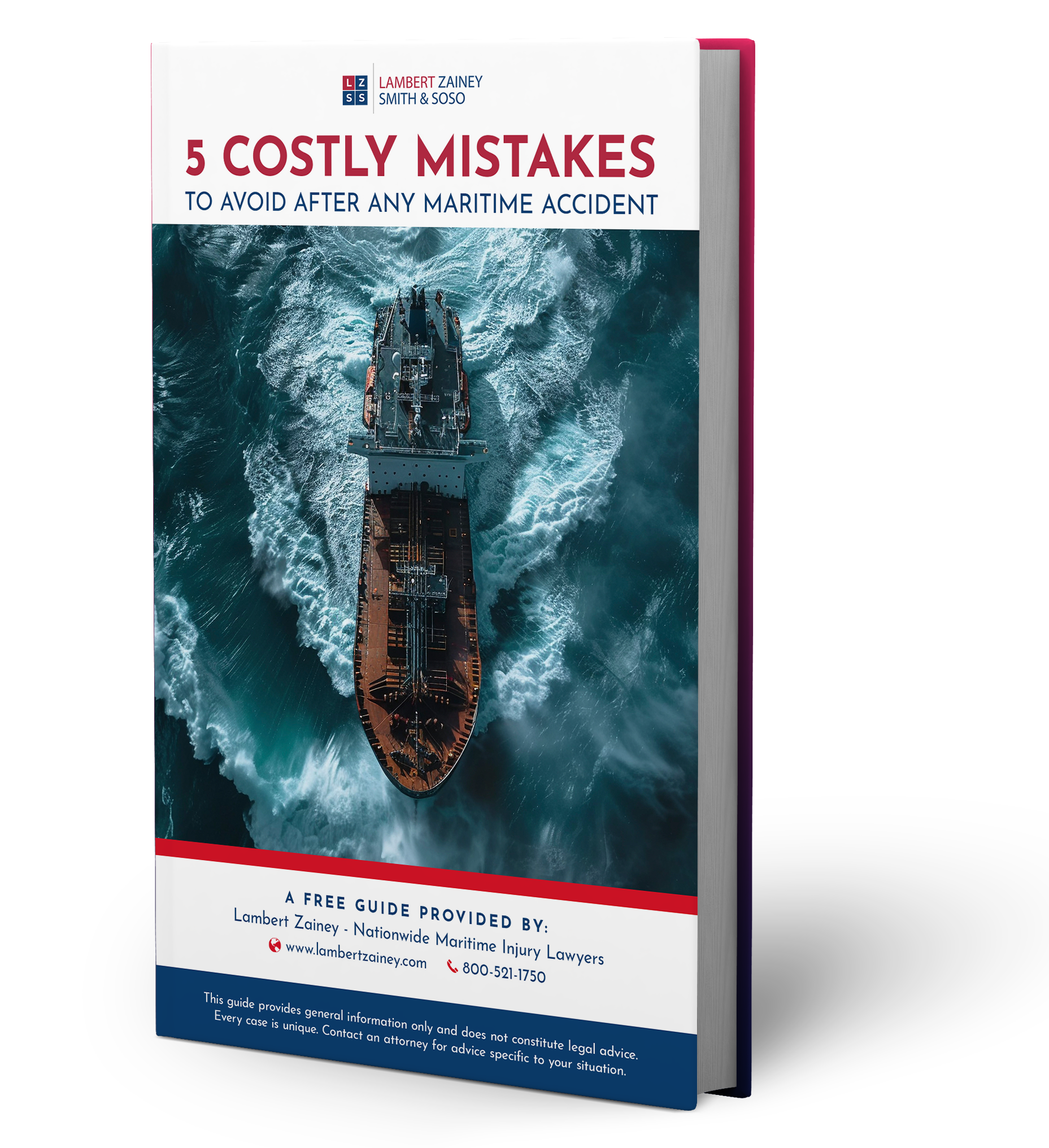Maritime workers must often work in hot and humid conditions, putting them at risk for heat exhaustion, heat stroke and other heat-related illnesses. As summer approaches and the days become warmer along the Gulf Coast, it is important for maritime workers and their employers to be aware of the dangers of overheating and take the necessary steps to maintain a safe workplace and prevent heat-related on the job injuries.
When a person exerts themselves in a hot environment, their body attempts to maintain a stable internal temperature by circulating blood to the skin and sweating. As temperatures rise, it becomes more difficult to cool the body and maintain a safe internal temperature. High levels of humidity, such as we experience in the Gulf Coast region, also make it difficult for sweat to evaporate and cool the skin. Prolonged exposure to heat and high humidity can cause a host of heat-related health problems.

What You Need to Know About Heat-related Illnesses
Excessive exposure to heat can cause a wide range of heat-related illnesses. Here are the most common conditions that can afflict maritime workers, along with their symptoms and treatments:
Heat Stroke
Heat stroke occurs when a person’s body is no longer able to regulate its core temperature and rid itself of excess heat. The most serious form of heat-related illness, heat stroke is a medical emergency that may result in death.
Symptoms include very high body temperature, confusion, loss of consciousness, and seizures.
If you suspect someone is experiencing a heat stroke, call for emergency medical assistance immediately. Heat stroke is a medical emergency. While waiting for EMTs to arrive you should:
Heat Exhaustion
Heat exhaustion can happen when the body loses excessive water and salt through heavy sweating. In addition to hot weather and strenuous activity, heat exhaustion can also be caused by dehydration, alcohol use and overdressing – wearing clothes that don’t allow sweat to evaporate easily.
Symptoms include headache, nausea, dizziness, weakness, irritability, thirst, and heavy sweating.
What to do for heat exhaustion:
Heat Cramps
Heat cramps are painful muscle cramps and spasms that can happen when the body loses too much fluids and electrolytes when sweating. In many cases, the cramps don’t occur until sometime later, such as during the night or when relaxing.
Symptoms include: cramping in the in the abdomen, arms and calves.
First aid treatment:
Heat Rash
This is a skin irritation caused when sweat does not evaporate from the skin. Also known as prickly heat, heat rash is a common heat-related condition.
Symptoms include clusters of red bumps on the skin, usually appearing on neck, upper chest, and folds of the skin.
First aid/treatment includes:
Avoiding Heat-related Illnesses
Workers should pay close attention to how they and their co-workers react to the heat. The Occupational Safety and Health Administration (OSHA) recommends the following practices to help workers avoid succumbing to heat-related conditions:
Be aware of the heat index. The heat index describes how hot it “feels” outside; it is calculated not just by the air temperature but also the humidity and wind conditions.
The following precautions can help avoid or minimize heat-related illness:
Get Our FREE Guide to Protect Your Claim
What you do after an accident is critical. Insurance companies will try to get you to make mistakes that can hurt your claim. Our free guide can help you avoid these traps.
Download our complimentary guide: “5 Costly Mistakes to Avoid After Any Maritime Accident” to arm yourself with the knowledge you need to protect your rights.
We Put the Heat on Those Responsible for Your Injuries
Employers of maritime workers have an obligation to maintain a safe workplace for their employees. This includes protecting them from the effects of extreme heat and humidity.
Lambert Zainey has been helping injured maritime workers for over 40 years. If you have been injured on the job, contact Lambert Zainey to schedule a free consultation with one of our maritime accident lawyers. We are headquartered in New Orleans and serve clients all over the country.
Maritime workers must often work in hot and humid conditions, putting them at risk for heat exhaustion, heat stroke and other heat-related illnesses. As summer approaches and the days become warmer along the Gulf Coast, it is important for maritime workers and their employers to be aware of the dangers of overheating and take the necessary steps to maintain a safe workplace and prevent heat-related on the job injuries.
When a person exerts themselves in a hot environment, their body attempts to maintain a stable internal temperature by circulating blood to the skin and sweating. As temperatures rise, it becomes more difficult to cool the body and maintain a safe internal temperature. High levels of humidity, such as we experience in the Gulf Coast region, also make it difficult for sweat to evaporate and cool the skin. Prolonged exposure to heat and high humidity can cause a host of heat-related health problems.

What You Need to Know About Heat-related Illnesses
Excessive exposure to heat can cause a wide range of heat-related illnesses. Here are the most common conditions that can afflict maritime workers, along with their symptoms and treatments:
Heat Stroke
Heat stroke occurs when a person’s body is no longer able to regulate its core temperature and rid itself of excess heat. The most serious form of heat-related illness, heat stroke is a medical emergency that may result in death.
Symptoms include very high body temperature, confusion, loss of consciousness, and seizures.
If you suspect someone is experiencing a heat stroke, call for emergency medical assistance immediately. Heat stroke is a medical emergency. While waiting for EMTs to arrive you should:
Heat Exhaustion
Heat exhaustion can happen when the body loses excessive water and salt through heavy sweating. In addition to hot weather and strenuous activity, heat exhaustion can also be caused by dehydration, alcohol use and overdressing – wearing clothes that don’t allow sweat to evaporate easily.
Symptoms include headache, nausea, dizziness, weakness, irritability, thirst, and heavy sweating.
What to do for heat exhaustion:
Heat Cramps
Heat cramps are painful muscle cramps and spasms that can happen when the body loses too much fluids and electrolytes when sweating. In many cases, the cramps don’t occur until sometime later, such as during the night or when relaxing.
Symptoms include: cramping in the in the abdomen, arms and calves.
First aid treatment:
Heat Rash
This is a skin irritation caused when sweat does not evaporate from the skin. Also known as prickly heat, heat rash is a common heat-related condition.
Symptoms include clusters of red bumps on the skin, usually appearing on neck, upper chest, and folds of the skin.
First aid/treatment includes:
Avoiding Heat-related Illnesses
Workers should pay close attention to how they and their co-workers react to the heat. The Occupational Safety and Health Administration (OSHA) recommends the following practices to help workers avoid succumbing to heat-related conditions:
Be aware of the heat index. The heat index describes how hot it “feels” outside; it is calculated not just by the air temperature but also the humidity and wind conditions.
The following precautions can help avoid or minimize heat-related illness:
Get Our FREE Guide to Protect Your Claim
What you do after an accident is critical. Insurance companies will try to get you to make mistakes that can hurt your claim. Our free guide can help you avoid these traps.
Download our complimentary guide: “5 Costly Mistakes to Avoid After Any Maritime Accident” to arm yourself with the knowledge you need to protect your rights.
We Put the Heat on Those Responsible for Your Injuries
Employers of maritime workers have an obligation to maintain a safe workplace for their employees. This includes protecting them from the effects of extreme heat and humidity.
Lambert Zainey has been helping injured maritime workers for over 40 years. If you have been injured on the job, contact Lambert Zainey to schedule a free consultation with one of our maritime accident lawyers. We are headquartered in New Orleans and serve clients all over the country.









